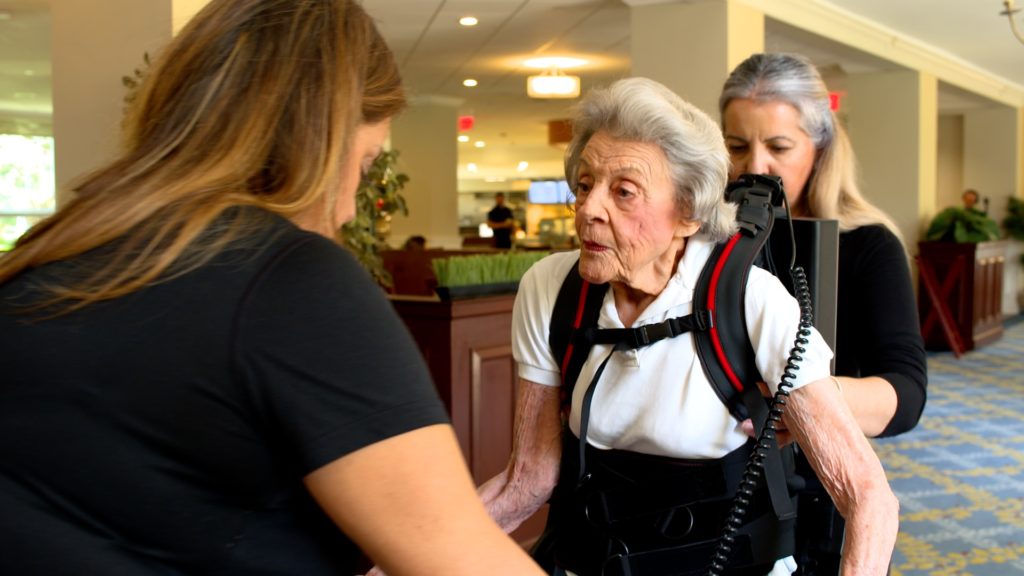
For many long-term care residents, the concept of never being able to walk or stand again is devastating. That’s why it was fascinating to learn how one community has used a robot to help its residents.
A few months ago, McKnight’s began making a conscious effort to hear from you, specifically how you’re creating positive change in your facility. The Army Distaff Foundation operates the Knollwood Military Retirement Community in Washington, D.C., and told me how it started using the EksoGT™, a wearable robotic suit, in its rehab department about a year ago.
“We were one of the first organizations to use it as off-label use for those with strokes,” explained Matt Reilly, associate executive director. The director of rehab, Adriana Winters, talked to Ekso and said “let’s try it.”
The team incorporated it into the care plan for a 97-year-old resident, Sybil Marks, pictured, who wasn’t able to walk far.

Knollwood resident Sybil Marks
“What we saw is six months post the last stroke in her treatment was incredible recovery,” Reilly said. “Now she can walk the hallway without her rollator. She experienced re-innervation in upper right extremity. Her overall well being has improved dramatically.”
The community is also using bioness integrated therapy system, which kind of automates and digitizes traditional exercises.
“The system itself will make recommendations for different exercises to help with affected areas,” Reilly said.
The Army Distaff Foundation was created in 1959 as a safety net for widows of war. As a non-profit organization, it provides housing, health, and wellness services to retired military officers and their families at Knollwood, regardless of one’s ability to pay. Now, 60 years later, the foundation found it could “meet a need that hasn’t been met,” Director of Development Jim Michels told me.
“Our organization has a history of being on the front end,” he said.
That includes other innovations, such as starting to incorporate the Domalys Aladin lighting system in assisted living: The sensors detect motion and slowly ramp up lighting to reduce injury or falls.
It’s fun to think about robots, sensors and technology helping residents become healthier. I can only hope that some community is able to have the Boston Dynamics dog visit and dance. But today, what the men at the foundation stressed to me was not only the cool technology, but how much the residents benefit from feeling like they are helping the research.
“When you think of technology it elicits images of being cold and sterile,” Reilly said. “When you have residents who are participating in research, you see their participation as occupational wellness. A sense of purpose gives it a human purpose.”
That’s worth thinking about when considering new technology.
Follow Senior Editor Elizabeth Newman @TigerELN.



